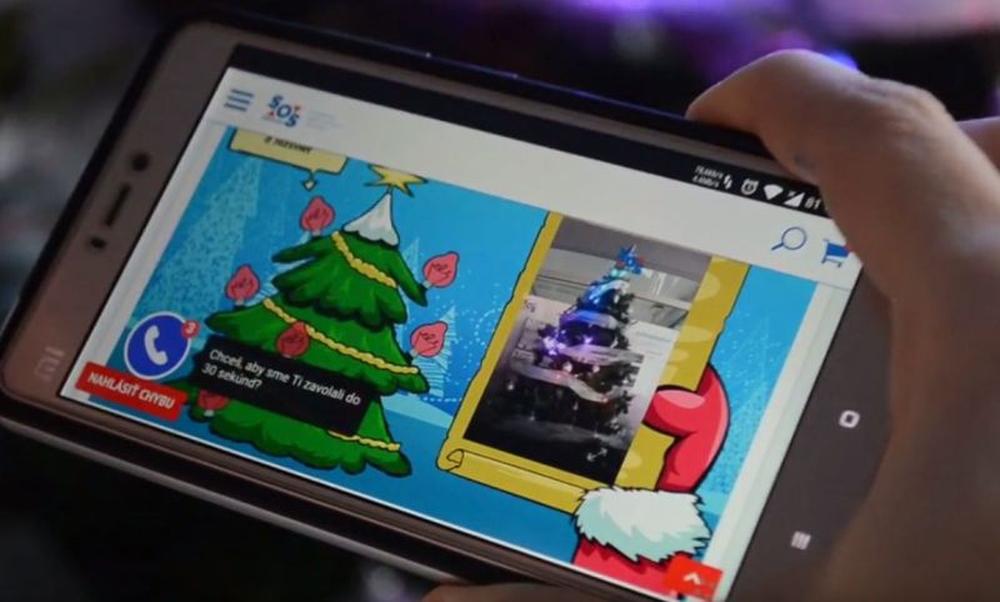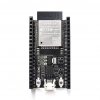Who’s coming? Santa or St Nicholas? And how does he get to us?
During the brainstorming with my colleagues I realized that the SOS electronic building in Košice has no chimneys (brainstorming is a very useful thing!). It is a real bummer because Santa cannot get into the building on Christmas and thus won’t bring us any presents, nor light up the Christmas tree. What about that? So, I thought that I'll save the tree at least. I'll connect it to the Internet so our customers can light up the tree through the web instead of Santa. The gifts were saved by the boss on the paychecks.
What did I use for it?
- ESP8266 WiFi module
- Special Christmas LED lighting with WS2811 drivers
- Raspberry B v3
- Raspberry camera (for everyone to see that the tree is really lighting up)
- Artificial Christmas tree - Box of Christmas decorations
In the first phase of the project, I tested what the ESP8266 WiFi module together with the WS2811 LED drivers can do. But especially what can I do? I made the LEDs flash, light, but as usual, only at home on the table. The SOS electronic WiFi network did not work that way. The ESP8266 was getting frozen, it wasn’t responding. It had to be restarted. Where is the problem? What now? Arduino libraries?
After hours of experimenting and debugging the code, the bulb lit up. No, not yet on a tree! In the SOS, hundreds of devices are connected to the PC network; it’s really busy data traffic. That's why I tried to connect the WiFi module to a separate WiFi network. The IT administrator has set up my WiFi router, but it didn’t help either.
Later I came to see that the above-mentioned "WiFi router" is just an ordinary AP in bridge mode (I say hello to a colleague :). So the whole data traffic in the network was also on the WiFi module, which sometimes wasn’t able to keep up with the 80Mhz processor tact. One option was to drop ESP8266 into a trash (I was pretty close to it) and experiment with another HW. For example, ESP32. It has 2 CPUs with 260MHz tact, or use Lantronix, AAEON professional solutions. Well, "cannon on sparrow"? Finally, I've solved it all with a real WiFi router with NAT.
What about Live Video?
Raspberry Pi with a Raspberry camera was an unambiguous winner. Stream live video from SOS electronic directly to the Internet via an open port, or experiment with a proxy somewhere in the data centre, solve HTML / JS video player in web browsers? After a while of "googling", I discovered YouTube Live. Setting it up was very easy. The image super in full HD, a relatively small data flow but live was not really live. Video delay of 10 seconds or more was really big for this purpose.
After reading “half the Internet”, I discovered the Czech streaming service AngelCam. The image-to-data ratio was worse but still acceptable (MJPG compression), 1-2 seconds delay. So the "live video" of the tree from SOS was streamed from AngelCam.
What to add at the end? It looks so easy and yet I still learned so much during its creation.
Greetings from Matúš Čopík, author
PS: Get ready for next SOS electronic Christmas!
It looks so easy and yet I still learned so much during its creation. What did I use for it? - ESP8266 WiFi module - Special Christmas LED lighting with WS2811 drivers - Raspberry B v3 - Raspberry camera (for everyone to see that the tree is really lighting up) Greetings from Matúš Čopík, author https://www.soselectronic.com/articles/no-name/technical-background-of-iot-tree-competition-2119
Competition:
We enjoyed the Christmas tree during the Christmas, so now we can make you happy too.
How many LED bulbs were on our tree? We will draw two winners of Esp32-DevKitC
Thank you for your efforts and all your responses.
We received exactly 45 answers. The correct response is 50 LED bulbs.
We have drawn the winners: Mr. L. Tamás from Hungary and Mr. J. Michal from Slovakia.
Congratulations!!
Do you like our articles? Do not miss any of them! You do not have to worry about anything, we will arrange delivery to you.



















